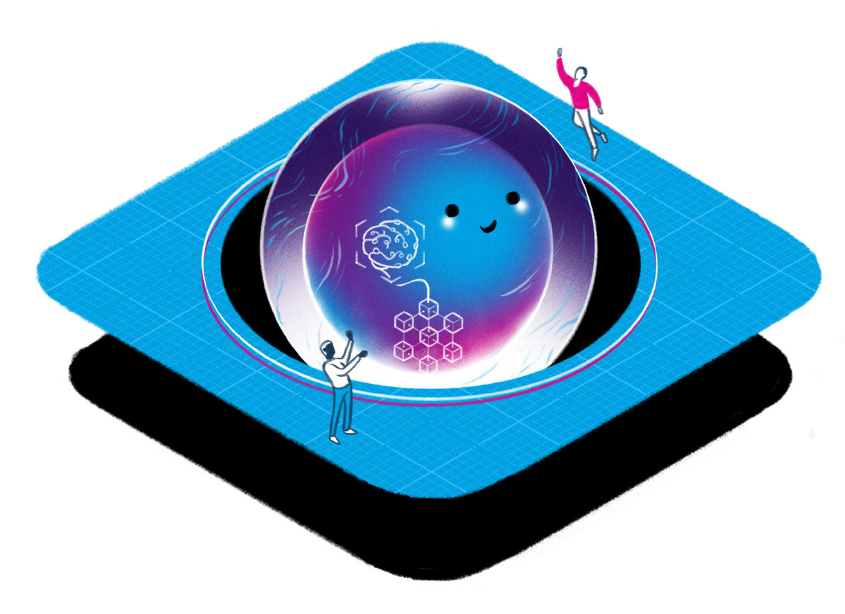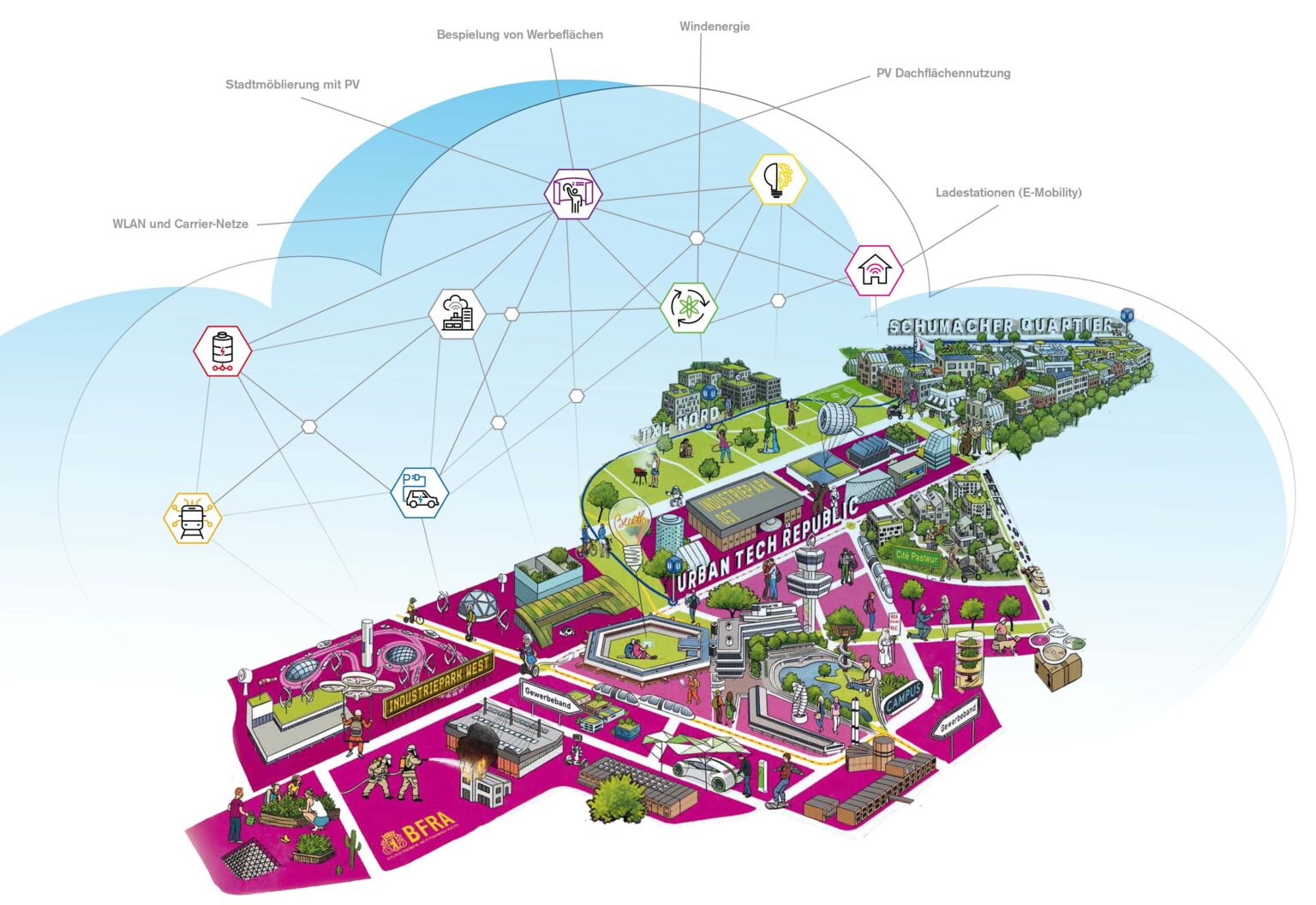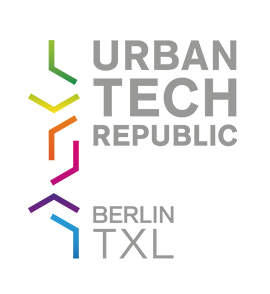The Platform
The heart of the FUTR HUB: the data platform
The central infrastructure of the FUTR HUB is the data platform, which brings together urban data, interlinks it and makes it accessible. The data platform will make it possible to use data sources from all fields and sectors of the urban space (data integration).

The approach to developing the data platform is modular and gradual, so that in future it will be possible to react quickly and in response to demand. Cloud-based architecture ensures that requirements relating to modularity and automation of processes can be met. In order to embed openness and transparency, and to facilitate development partnerships, we are publishing the platform with an open-source license following the principle of “public money, public code”. Available as free software, the platform is already in use in other projects and communities.
Berlin TXL and the FUTR HUB demonstrate how intelligent digitalization of cities improves quality of life, conserves resources and makes urban living spaces more sustainable. With the data platform as the central element, urban data is integrated and made usable for developing and successfully implementing innovative solutions for a digital city. As a result of openness, transparency and collaboration, other projects and communities will also benefit from the experiences and technologies of the FUTR HUB.
Urban data is generated by sensors in building ventilation systems, traffic lights or charging stations, among other things. Based on geodata infrastructure that includes, for example, the plans for Berlin TXL, the system is gradually merged with an IoT system and developed into a comprehensive data platform on topics such as energy, mobility and smart nature.
Three tasks form the priorities for the data platform:
- The central data platform of the FUTR HUB serves as a digital engine room for the reliable and efficient operation of Berlin TXL. This saves costs and increases user satisfaction – whether for tenants living in the Schumacher Quartier or businesses in the Urban Tech Republic.
- As a driver of innovation, the platform promotes collaborative work by companies on new, data-driven solutions and applications for the internet of things (IoT).
- Through sustainable resource management and predictive data analysis, the data platform supports professional users in their decisions, identifies potential savings, and furthermore extends the lifespan of technical facilities, buildings and infrastructure.

